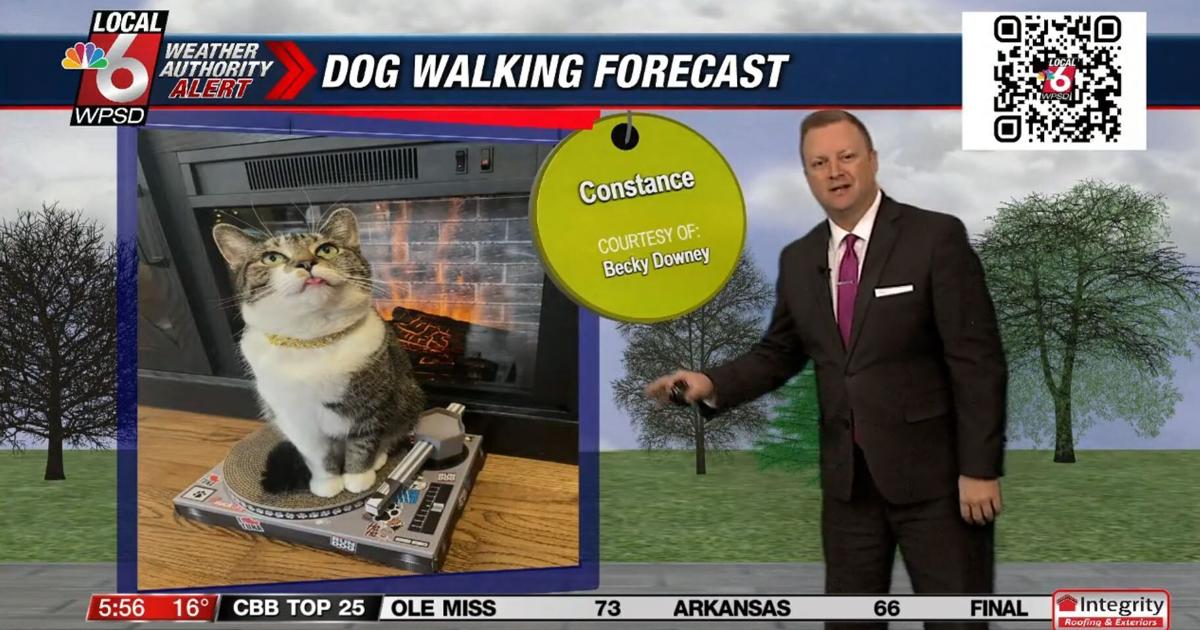MAYFIELD, Ky. — With the fall semester on the horizon, many school athletic teams are beginning practices with outdoor components. However, these groups must contend with extreme temperatures this week.
On Monday, July 29, WPSD-TV issued heat advisories for much of western Kentucky, including the Paducah and Mayfield areas. The heat index was around 105 degrees, and temperatures are expected to rise to 110 degrees in some parts.
According to the Center for Disease Control and Prevention, symptoms of heat-related illness include heavy sweating, a fast but weak pulse, damp or dry skin, headache, nausea or vomiting, dizziness and fainting.
McCracken County Schools, Paducah Independent Schools, Mayfield Independent Schools and Graves County Schools all have protocols in place for outdoor conditions that are unsuitable for practice.
Tyler Brooks, the head football coach for McCracken County Schools, said that Monday through Friday practices for the high school team began on July 10 with an “acclimation process” to help students adapt to summer heat.

The process entails a progression of different pieces of heavy equipment every five days — helmets, shoulder scales, and finally, full padding. Before student athletes can participate in games or scrimmages, they must complete three practices in full pads.
Practices were initially from 7 a.m. to 11:30 a.m., but they were moved to 5 p.m. to 8:30 p.m. to “beat the heat.”
“Anytime in July and August, practice times are based around heat,” Brooks said.
Brooks said another measure taken to protect students from heat sickness is weigh-ins at the beginning and end of practice to track loss in water weight. If there is a large enough disparity between practices, students are prohibited to participate and must recover through water, food and rest.
He noted that the small black pellets in turf attract extra sunlight and compound the heat.
“There’s a reason why we have these rules,” Brooks said. “If this stuff isn’t taken seriously, you have a kid’s life in your hands.”
Brooks recommended that other student athletes in outdoor sports like soccer, baseball and softball adopt their own acclimation processes to prepare their bodies for the heat. He said they should expose themselves to outdoor temperatures and physical activity beyond practice, rather than exclusively staying indoors and being sedentary.
Sean Thompson, the head football coach for Paducah Tilghman High School under Paducah Independent Schools, said that his team’s field contains a special infield that remains 20 degrees cooler than the standard turf. He said this amenity, coupled with “a lot of precautions,” maintain the body through taxing temperatures.

Practices typically occur from 4 p.m. to 7 p.m., but can be rescheduled to 8 p.m. to accommodate extreme temperatures.
“We want our kids to stay healthy and at the top of their game,” Thompson said.
When temperatures are too inhospitable, Thompson said that they will move to an indoor, air-conditioned facility.
Thompson stressed the importance of water to mitigate the effects of severe heat. He said it is always at the disposal of student athletes, and they are allowed and strongly encouraged to rehydrate anytime. Cold pools are also available for students to re-energize.
“We do a good job of practicing in a way that kids have access to water and rest,” Thompson said.
Thompson highlighted that these precautions ensure students remain functional and avoid injury and illness.
“You don’t want to put any kid in that situation,” Thompson said.
Todd Hatchell, the athletic director for Mayfield Independent Schools, outlined his district’s heat policy for sports practices that goes “above and beyond” to preserve children’s well-being. Hatchell said the department checks temperatures daily and plans accordingly.
When temperatures hit 104 degrees, all outdoor activities must cease. Starting at 100 degrees, water breaks are mandatory every 30 minutes; and helmets, padding and other heavy equipment are required to be removed. Temperatures are consistently monitored every 30 minutes when they register between 95 degrees and 104 degrees.
To avoid peak heat, the MIS high school football, soccer and marching band teams practice outside in the morning, and the middle school baseball and softball teams practice outside in the evening, with the soccer team having another session then. Hatchell said that practices average around two hours daily for five days a week.
To mitigate and prevent heat-related illnesses, Hatchell explained that cold compresses, cold towels, water and ice tubs are always available. The lattermost lowers core temperatures when students are submerged.
In severe cases, the football team has a Polar Pod, a transportable cooling apparatus that can be utilized at away games.
“We try to protect our student athletes this time of year,” Hatchell said.
Khristain Elliott, the athletic director for Graves County Schools, said that his district adheres to a heat index chart for outdoor practices.
At 99 degrees, the department increases precautions like frequent water breaks and cooling towels. Helmets, padding and other heavy equipment are removed at 100 degrees, and all outdoor activities cease at 105 degrees.
Elliott noted that soccer, baseball, softball and football teams conduct practices lasting several hours in the morning and evening to deter heat-related illnesses. Elliott said the football team starts practices at 6 a.m. for five days a week.
“There’s not much we can do about the heat, but we work around it,” Elliott said.





















Discussion about this post